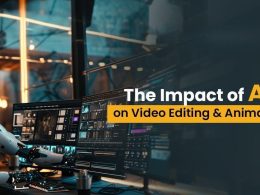Introduction
In the past few decades, the landscape of media consumption has undergone a seismic shift. Traditional broadcasting, once the dominant medium for news, entertainment, and information, has faced significant challenges and transformations due to the rise of digital media. This article delves into the impact of digital media on traditional broadcasting, exploring the myriad ways in which the two mediums interact, compete, and co-evolve.
The Evolution of Broadcasting

-
Traditional Broadcasting
Traditional broadcasting refers to the transmission of audio and video content to a dispersed audience via radio waves or cable systems. This form of media has been a cornerstone of information dissemination since the early 20th century. Major networks and stations provided scheduled programming, including news, dramas, comedies, and live events.
-
The Rise of Digital Media
Digital media encompasses content that is created, distributed, and consumed through digital technologies. This includes websites, social media platforms, streaming services, podcasts, and more. The advent of the internet and advancements in digital technology have democratized content creation and distribution, allowing anyone with a smartphone or computer to produce and share media.
The Convergence of Digital Media and Traditional Broadcasting

-
Content Creation and Distribution
One of the most significant impacts of digital media on traditional broadcasting is the transformation in content creation and distribution. Traditional broadcasters have had to adapt to the digital age by incorporating online platforms into their distribution strategies. This includes streaming services, on-demand content, and social media channels.
-
Audience Engagement
Digital media has revolutionized the way audiences engage with content. Traditional broadcasting was largely a one-way communication channel, with limited interaction between the broadcaster and the audience. In contrast, digital media platforms facilitate real-time interaction, feedback, and engagement. Social media, for instance, allows viewers to comment, share, and discuss content, creating a more dynamic and participatory media environment.
-
Advertising and Revenue Models
The shift to digital media has also impacted advertising and revenue models. Traditional broadcasting relied heavily on advertising revenue from commercials aired during scheduled programming. Digital media, however, offers more targeted and personalized advertising opportunities through data analytics and user profiling. This has led to a shift in advertising spend from traditional broadcasting to digital platforms.
Challenges Faced by Traditional Broadcasting

-
Declining Viewership
One of the most pressing challenges for traditional broadcasters is the decline in viewership. With the proliferation of digital media options, audiences have more choices than ever before. This has resulted in a fragmentation of the audience, with many opting for on-demand and streaming services over scheduled programming.
-
Competition from Digital Platforms
Traditional broadcasters now face stiff competition from digital platforms such as Netflix, YouTube, and Spotify. These platforms offer a vast array of content that can be accessed at any time, making them more appealing to modern audiences who value convenience and flexibility.
-
Technological Advancements
The rapid pace of technological advancements in digital media has also posed a challenge for traditional broadcasters. Keeping up with new technologies, such as high-definition streaming, virtual reality, and interactive content, requires significant investment and expertise.
Adaptation Strategies for Traditional Broadcasters

-
Embracing Digital Platforms
To stay relevant, traditional broadcasters have increasingly embraced digital platforms. Many have launched their own streaming services, such as BBC iPlayer, CBS All Access, and HBO Max. These platforms allow broadcasters to offer on-demand content and reach a global audience.
-
Leveraging Social Media
Social media has become an essential tool for traditional broadcasters to engage with their audience. By leveraging platforms like Twitter, Facebook, and Instagram, broadcasters can promote their content, interact with viewers, and gather feedback. Live-tweeting during broadcasts, for example, has become a popular way to enhance viewer engagement.
-
Diversifying Content Offerings
To compete with digital media, traditional broadcasters have had to diversify their content offerings. This includes producing original content for digital platforms, creating podcasts, and exploring new formats such as short-form videos and interactive content.
The Future of Broadcasting

-
Hybrid Models
The future of broadcasting is likely to involve hybrid models that combine traditional and digital elements. Broadcasters will continue to offer scheduled programming while also providing on-demand and streaming options. This approach allows them to cater to different audience preferences and maximize their reach.
-
Personalization and Data Analytics
Personalization and data analytics will play a crucial role in the future of broadcasting. By leveraging data, broadcasters can offer personalized content recommendations, targeted advertising, and a more tailored viewing experience. This can help them compete with digital platforms that excel in personalization.
-
Collaboration and Partnerships
Collaboration and partnerships between traditional broadcasters and digital platforms are likely to become more common. By working together, they can leverage each other’s strengths and create synergies. For example, traditional broadcasters can benefit from the technological expertise of digital platforms, while digital platforms can gain access to high-quality content and established audiences.
Conclusion
The impact of digital media on traditional broadcasting is profound and multifaceted. While traditional broadcasters face significant challenges, they also have opportunities to adapt and thrive in the digital age. By embracing digital platforms, leveraging social media, diversifying content offerings, and adopting hybrid models, traditional broadcasters can continue to play a vital role in the media landscape. The future of broadcasting will be shaped by the convergence of traditional and digital media, resulting in a more dynamic and interactive media environment.












